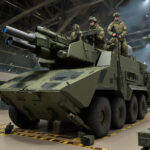SPROUT: Vine-like Inflatable Robot Navigates Rubble to Aid Search and Rescue Teams
MIT Lincoln Laboratory and the University of Notre Dame have developed a vine-like robot to revolutionize search and rescue operations in challenging environments. Named SPROUT, this inflatable robot has the remarkable ability to navigate through rubble and tight spaces, offering a beacon of hope in the midst of disasters.
The innovative design of SPROUT draws inspiration from natural vines, allowing it to bend, twist, and inch its way through debris with unparalleled agility. Equipped with advanced sensors and cameras, this robot can detect signs of life and structural instabilities, providing crucial information to rescue teams.
One of the key features of SPROUT is its inflatable body, which enables it to adjust its shape and size according to the environment. This flexibility allows the robot to squeeze through narrow passages and expand to form a stable base for monitoring and communication.
In addition to its physical capabilities, SPROUT is equipped with artificial intelligence algorithms that enable it to make autonomous decisions based on the data it collects. This not only enhances the efficiency of search and rescue missions but also reduces the risk to human responders.
The development of SPROUT represents a significant milestone in the field of robotics, showcasing the potential for technology to make a real difference in humanitarian efforts. By combining engineering innovation with a deep understanding of the challenges faced in disaster scenarios, the team behind SPROUT has created a tool that has the potential to save lives.
Imagine a scenario where a natural disaster strikes, and traditional search and rescue methods are hindered by the treacherous terrain. In such situations, SPROUT can be deployed to navigate the rubble, locate survivors, and provide vital information to guide the rescue operation.
Moreover, the versatility of SPROUT extends beyond search and rescue missions. It can be utilized in hazardous environments such as collapsed buildings, mines, or even space exploration, where human presence is limited.
As we look to the future, the development of SPROUT serves as a testament to the power of collaboration between academia and industry in driving technological innovation. By pooling together expertise from diverse fields, such as robotics, artificial intelligence, and disaster response, we can create solutions that were once thought impossible.
In conclusion, SPROUT stands as a shining example of how robotics can be harnessed for the greater good. Its vine-like design, inflatable body, advanced sensors, and autonomous capabilities make it a valuable asset for search and rescue teams worldwide. As we continue to push the boundaries of technological advancement, we can rest assured that tools like SPROUT will be there to lend a helping hand in times of crisis.
innovations, robotics, searchandrescue, MITLincolnLaboratory, technologyadvancement












